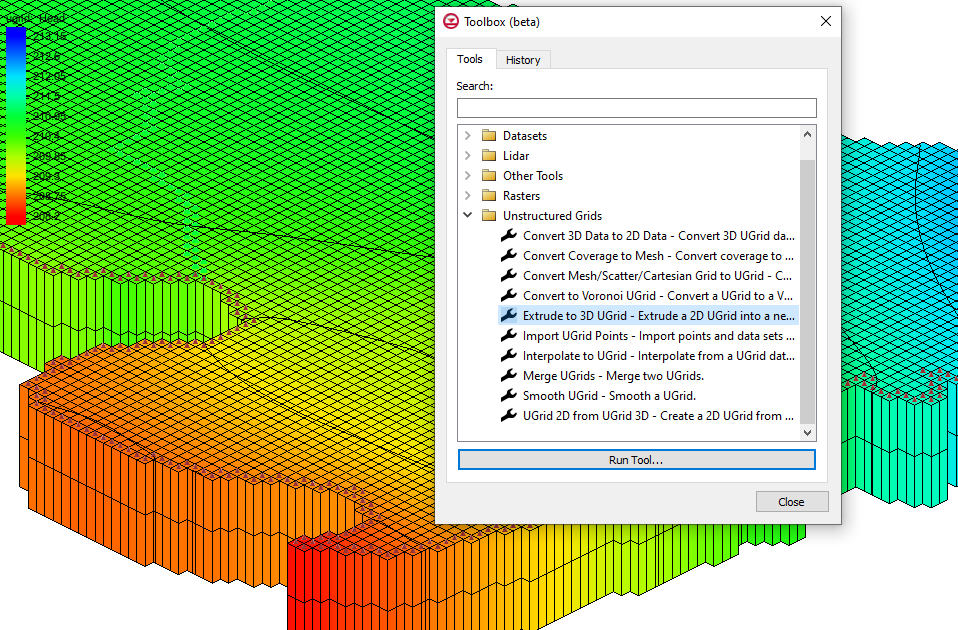We use cookies to make your experience better. To comply with the new e-Privacy directive, we need to ask for your consent to set the cookies. Learn more.
Converting Between 2D and 3D Unstructured Grids
Many projects in the Groundwater Modeling System (GMS) start with an unstructured grid (UGrid). GMS supports both 2D and 3D UGrids. The type of UGrid you will need to use will depend on which numeric model you are using for your project. For this reason you may need to change a 2D UGrid to a 3D UGrid or vice versa. This blog post is going to review some of the tools for converting between 2D and 3D UGrids.
Typically, models like MODFLOW-USG or MODFLOW 6 will require a 3D UGrid. If you only have 2D UGrid data, this may require taking a 2D UGrid and converting it to be a 3D UGrid. Likewise, you may need to convert a 3D UGrid to be a 2D UGrid. This is more often done to correct uses with the 3D UGrid, but also to be able to use the data from the 3D UGrid with other applications.
GMS provides two tools in the Toolbox for changing between 2D and 3D UGrids: the Extrude to 3D UGrid tool and the UGrid 2D from UGrid 3D tool. The Toolbox is accessible through the Toolbox macro and these two tools are located with the Unstructured Grids tools.

The Extrude to 3D UGrid tool converts a 2D UGrid to a 3D UGrid. The tool will allow you to select a 2D UGrid for extrusion, and then it lets you specify the number of layers and layer thickness for each of the new layers. This will extrude the 2D Ugrid to be a 3D UGrid with the specified number of layers that are at a uniform thickness. If you need layers to be at different thicknesses, you will need to edit the 3D UGrid using other tools in GMS.
The UGrid 2D from UGrid 3D tool will collapse a 3D UGrid to be a 2D UGrid. The tool allows you to select a 3D UGrid then select if the 2D UGrid should be created from the top or bottom of the 3D UGrid layers.
The unstructured grid tools in GMS allow you to have more options with how you work with UGrids and grid data for your groundwater projects. Try out the unstructured grid tools in GMS today!


